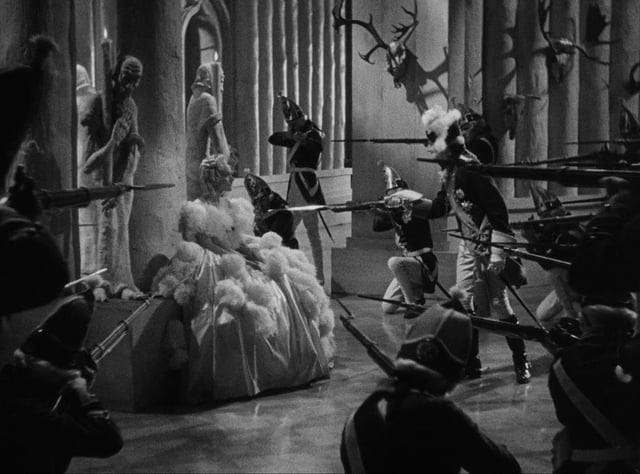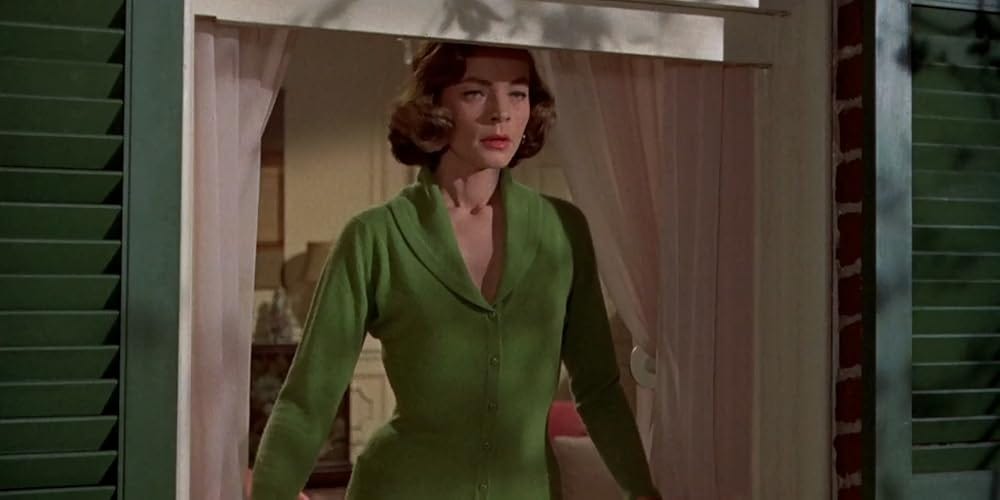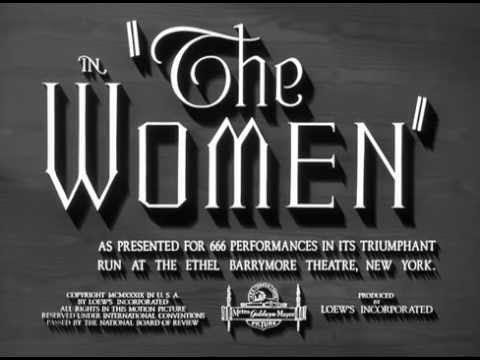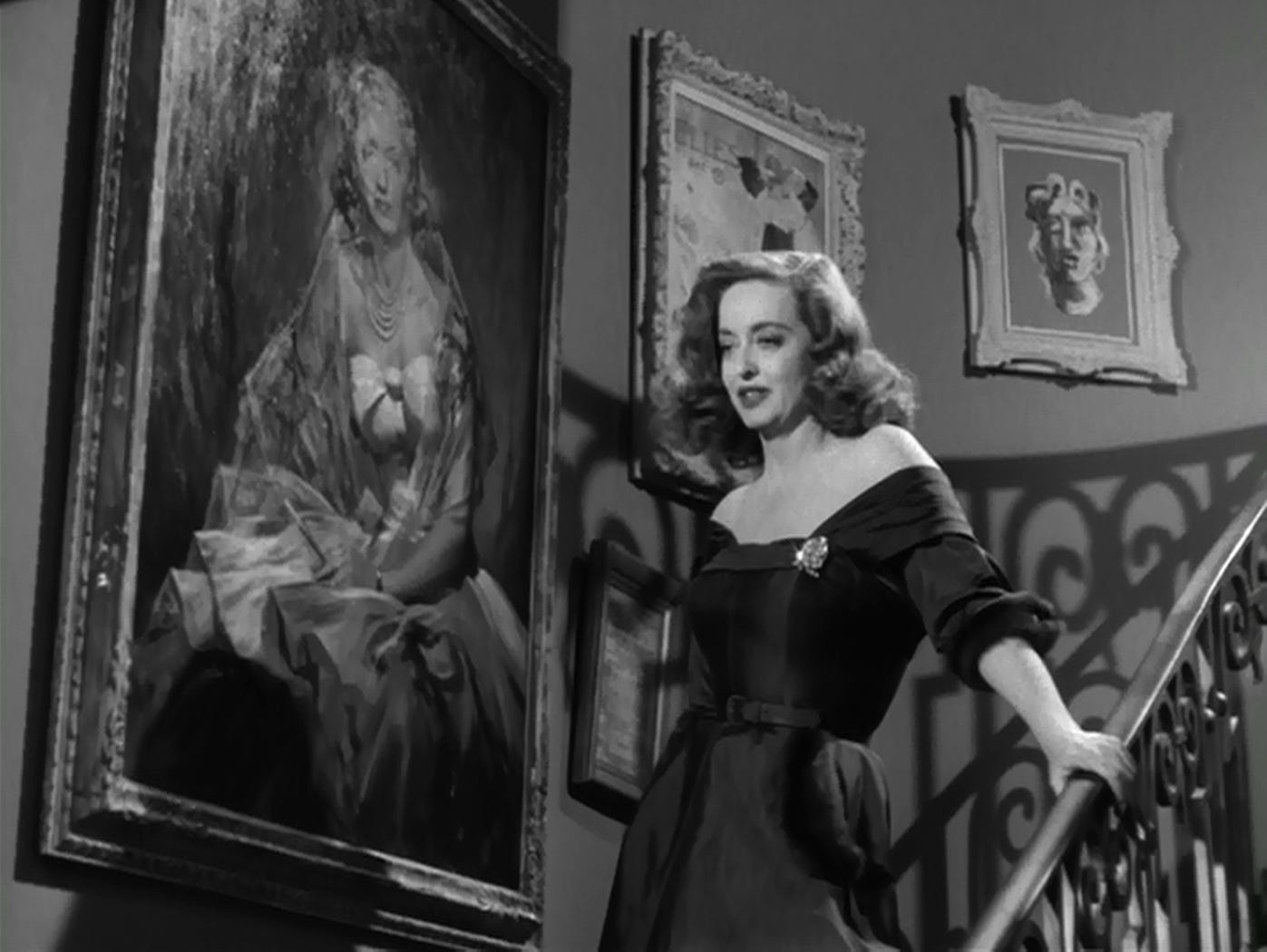I was waiting for a train the other day when I read this tweet from the bowels of Karlie Kloss’s relaunched i-D Magazine:

In the past five years Sofia Coppola has gone from a cult director, favoured by a select group of troubled teens, to a straight-up fetish. She’s got a wavery style but solid obsessions; she should actually serve as an accessible and low-stakes introduction to a much greater object of worship (good film as a historical practice). But it is 2025 and our new media class know nothing but a ) the exact sequence of images that make up The Virgin Suicides, b) a list of platitudes about cinema that make absolutely no sense in a historical context, and sometimes even in their own context.
The i-D tweet evidences the popularity of a few quite weird ideas. Here they are: films ‘before Sofia Coppola’ were mostly about men; film spectatorship was mostly for men, while ‘girls’ fell by the wayside; male directors are in inherent possession of something called a ‘male gaze,’ which oppresses the female subject in ways that can only be diffused by the use of a female director (thus ‘female gaze’). These are basically ‘folk beliefs.’ They range from regressive and essentialist to completely ahistorical but they have been absorbed and taken for granted by virtually every young female film fan I have ever spoken to. They slip unchallenged into programming notes and retrospective essays. They have had a strange, lionising effect on films directed by women - it’s half ‘bigotry of low expectations’ and half magical thinking. (See my pieces on Portrait of a Woman on Fire and Priscilla.)
how we got here
The film girls have been done wrong because 50 years ago an academic called Laura Mulvey wrote an essay called Visual Pleasure and Narrative Cinema. It’s now impossible to study anything to do with women, film, and women on film without coming across it in some form. If you are in a certain pro-Sofia pro-Varda set you have probably heard of Mulvey even if you haven’t heard of Lacan, on whom she bases her argument. The ‘male gaze’ and ‘female gaze’ are not hers by invention but it is largely her fault that they have entered the parlance of every Letterboxd citizen and apparently every i-D writer.
When I first heard about the essay I was really excited, because I love visual pleasure in narrative cinema.1 My enthusiasms were slightly misplaced. Mulvey argued Hollywood had manufactured its ‘magic’ by way of its ‘skilled and satisfying manipulation of visual pleasure,’ which ‘coded the erotic into the language of the dominant patriarchal order;’ now we’ve broken free of ‘the monolithic system… (of) Hollywood in the 1930’s, 1940’s and 1950’s,’ we can finally ‘break with normal pleasurable expectations in order to conceive a new language of desire.’
How exactly does this ‘skilled and satisfying manipulation’ work? Mulvey uses ideas from Lacan (The Mirror Stage) and Freud.2 The manipulated film form is ‘structured’ by the ‘unconscious of patriarchal society,’ and patriarchal society is deeply phallocentric - but this penis obsession would mean nothing without the existence of an oppositional ‘castrated’ female class, who stand for the male fear of that fate. Women thus ‘exist only in relation to castration and cannot transcend it.’
The unconscious ‘is formed by the dominant order’ and we can watch this order play out on the silver screen; Hollywood has always ‘restricted itself to a formal mise-en-scene reflecting the dominant ideological concept of the cinema.’ The male spectator is a voyeur: he can delight in his ‘scopophilia,’ or love of looking; he can also identify with the ‘ego ideals’ that are projected through the fiction of the mirrorlike screen and bolstered by the Hollywood star system. It is the scopophilic instinct that oppresses women - in an overarching active/passive split, they are ‘to-be-looked-at,’ and ‘displayed as sexual object.’
It’s often unclear which stage of the Hollywood genesis Mulvey is even talking about. Early in the essay she says we can find a new cinematic language because cinema is no longer the ‘monolithic system’ it was during the ‘1930s, 1940s and 1950s.’ She really shouldn’t be conflating all three decades because each were beset by different social and economic conditions.3 If you’re talking about sex relations and ‘the language of the dominant patriarchal order’ then it would be essential to at least mention the Hays censorship codes, which came in in the mid-1930s and forced Christian morality onto people who were sometimes used to working outside of it. Pre-recorded orchestral scores, which became prevalent from the mid-1930s and forced spectators to ally emotionally with certain characters over others, are a total omission from the essay. And the hyper-efficient assembly-line techniques that characterised ‘megalithic’ Hollywood filmmaking from the 1910s onward began to corrode as early as 1948, when an antitrust lawsuit successfully forbade the major studios from owning their own cinemas and crowding them with their own relatively low-cost films.
Another problem with the ‘monolith:’ Classic Hollywood was special as a historical entity because it subordinated the ego to the corporation. Films were collective productions with multiple authors. Visual Pleasure’s assertions about neuroses and sex relations and active/passive and women whose images are ‘stolen’ should all be questioned in this context. The extreme majority of Classic Hollywood directors were men, but there were several prolific female editors and many female screenwriters - Frances Marion alone wrote over 130 films! The star system, which Mulvey at least acknowledges as ‘complicated,’ was shaped partially by female gossip columnists. And actresses - who actually did have to act and not just sit around for passive consumption - should not be undermined as decision-makers.
We need some actual analysis, so for examples of ‘voyeurism’ and ‘scopophilic fetishism,’ Mulvey zeroes in on Josef von Sternberg and Alfred Hitchcock, whose respective high periods occurred 20 years apart. Von Sternberg lets the audience in on a bit of fetishistic scopophilia. Nobody else can have it, even his leading men; Marlene Dietrich, who is strewn in decorations and used relentlessly for chiaroscuro fodder, becomes ‘a perfect product’. (This article provides more useful background). We know from on-set observers that Dietrich often took charge of her own costumes and lighting, which undermines the active/passive split. Even if that information had not yet been made available to Mulvey (von Sternberg portrayed himself as total auteur), she still goes wrong in conflating the final effect and initial intention.

Mulvey doesn’t seem to see von Sternberg’s over-the-top, exotic mise-en-scene as an actual unit of meaning in itself, ie. a bearer of emotional resonance and a political signifier. Both interpretations would have some implication on his protagonists, who are still forced by industry convention to relate to their surroundings. Von Sternberg worked through the Silent Era - the German film market at the time was one of the largest, and he would have been familiar with that industry’s use of Expressionist sets to heighten its film narratives. And his visual style clearly stood for a certain geopolitical orientation in the popular imagination by 1933 (you can see a revealing parody here in a Lloyd Bacon musical).
For Mulvey, Alfred Hitchcock’s obsessive, voyeuristic heroes add an extra dimension to the scopophilic experience. But we do not ‘see precisely’ what the ‘male hero sees;’ the entire point of Vertigo and Rear Window comes from the subversion of an ‘ideological correctness’ she ascribes to James Stewart. In Vertigo we see a man driven mad to the point of pre-Dumbo animated psychedelia; in Rear Window we see a version of the same character incapacitated and accordingly misled in his priorities, away from his own life and into the apartment opposite. They are objects of our own derision and morbid fascination; without the gap between the logic of our voyeurism and the logic of the character-voyeurs there would be no film. Story development and tension don’t seem to matter in the grip of Lacan; it’s interesting that Mulvey talks about the ‘liberal use of subjective camera’ because it just makes us think about Rope, where the moving long takes are unusually liberal and the women just distract from and infringe upon the actual crime at hand.
In the 1970s both directors were certainly well-known and widely discussed, which would have ensured some accessibility to theorists with little knowledge of Classic Hollywood. But their distinct styles and narrative preoccupations mean neither should be considered a typical director in the version of Hollywood Mulvey seems to think she is talking about. If we are talking about American cinema’s ‘monolithic system’ then we need some analysis of its actual adherents - the ones who are recognised as stylistically-typical participants in the system rather than as autonomous auteurs. But if Mulvey tried to do that then her whole essay would fall apart.
Why don’t we hear about, say, George Cukor, an incredibly prolific director who worked at MGM for two decades in several genres and has never been known for his individual ‘touch’ or ‘style’? Could it be because an overwhelming majority of his films were aimed at women and featured women in lead roles? I wonder what Cukor was up to in 1939! Could he have been directing a film called The Women, starring an ensemble cast of only women, like not even a male animal allowed on set? What’s that - it was one of the most successful films of the year? He must have been big with the ladies - wait WHAT?! His known homosexual attachments appear to significantly complicate Mulvey’s thesis? 😯
Mulvey’s analysis is based on the assumption that the default Classic Hollywood spectator is male. He’s always a ‘he’ in the text; her bepenised audience gets its ego fulfilment in front of Garbo tragedies, Busby Berkeley musical spectaculars, and artful Sternberg-Dietrich collaborations.4 But for almost all of Mulvey’s ‘monolithic’ studio period, the opposite was true. We have a trade paper statistic from 1914 in which 75% of American cinema seats are sold to women,5 and another from 1927 in which 83% of film spectators are female.6 Margaret Thorp found in 1939 that cinemas were dominated by women, who were able to dictate the ‘tone’ of studio output.7 A Gallup poll evens out the gender balance in 1942 (men go alone, women on dates) but has pollsters arguing female audiences are more likely to choose a) the film, b) a trip to the cinema out of all other options.8 During the war, 'unescorted females’ begin to show themselves to urban film exhibitors.9 We only inch towards Mulvey’s vision of Hollywood towards the tail end of the 1950s, when women’s films were supplanted by the rise of television.
Hollywood studios were aware of the balance of power: they poured money into films with female protagonists and printed ‘fan magazines,’ which were mostly written and bought by women.10 This raises an interesting question: if the men are packaged for relatability and the women for sexual consumption, then why are women the ones buying the actual fungible products, covered with photos they can cut out and keep? From actual accounts of Hollywood spectatorship, it often feels as if the men are the ones getting consumed - and not necessarily in the flattening, perfect-product way. ‘70 per cent of Gary Cooper’s fan mail,’ alleges Margaret Thorp, ‘comes from women who write that their husbands do not appreciate them.’11
For Mulvey, it’s all sort of constant over the three decades. She ignores comedy completely; melodrama is a non-entity beyond particularly passionate tragic actresses Garbo and Dietrich, who were still marketed to women. Bette Davis, Kay Francis, Claudette Colbert, Irene Dunn, Miriam Hopkins, and Jean Harlow may as well be dead to her - which is very sad because some of them were actually alive when the essay was published. She never accounts for the presence of fast-talking lady comics like Mae West, Rosalind Russell, Lucille Ball, and Katharine Hepburn (very definitely not a passive presence - she imprints on you!!). The Films of the Forties virtually never come up in the essay - she zips, for some reason, between Busby Berkeley and Hitchcock. I would like to read her take on Joan Crawford, a huge star who was typecast first as a rebellious shop girl going after her fortune and then as a neurotic housewife also going after her fortune.
But it’s all OK! She does account for this enormous gap in her analysis! ‘There are films with a woman as main protagonist, of course,’ goes a snide footnote. ‘To analyse this phenomenon seriously here would take me too far afield.’ Then she directs us to someone else’s alternative interpretation of The Revolt of Mamie Stover, a film from 1956.
This is an unrepresentative choice - she’s managed to find a rare example of a women’s film catering to men. Jane Russell, who plays runaway prostitute Mamie Stover, could only be considered a typical female star for the final years of ‘monolithic’ Hollywood, when studios tried using buxom actresses and sexing up their promotional imagery to improve dire ticket sales. Russell is still outspoken and witty - a hangover from the 30s and 40s - but her specific sexual positioning is more New Hollywood than Old Hollywood. Of the more typically ‘classical’ films from this decade, I could pick out the emerging ‘women-in-the-workplace’ genre (The Best of Everything, Woman’s World), a very strong showing for women’s melodrama (Written on the Wind, Peyton Place, An Affair to Remember), and many instances of female-focused comedy (How to Marry a Millionaire, High Society, Pillow Talk).

dodgy theory is anti-woman!!!
There is a larger tendency here. You can also see it in the abstract from last year’s Louks Affair (I am linking my own viral-ish essay). It goes something like this:
‘Here is a big overarching theory I have imposed on a large body of creative work, stretching over thirty years or maybe an entire century. I will explore it using six or seven disparate examples that just happen to support my theory.’
The underlying issue: scientific method has fled the humanities. It is entirely possible that feminist film academics assign Visual Pleasure to students who have no theoretical background in Lacan or Freud, and from my own examination of university film curricula I am aware that Hollywood is very often represented through its outlier auteurs. Here we undermine the entire point of academia, ie. a free exchange of ideas subject to criticism and refinement. Young people don’t have the tools to criticise the theory because the theory is all they get; almost everything after it takes Mulvey as a prior and the gendered gaze as a given.
Film students should get an idea of how the industry actually worked and how it weathered various historical events; they should learn about actual viewership and box office and the makings of the star system. They should learn about its basic genesis and its technological background. They need to understand the priors of a medium before they can reckon with an overarching, subjective theory of it; they need to work out where the theory comes from so they can take its influences apart too.
Quite often when someone has a bad, Mulvey-tinged take about sex relations in cinema I go on their Letterboxd and find it completely blank before the 1980s, with the exception of Disney animation and one or two standards you shouldn’t take out of context, like Breathless and Citizen Kane. This state of affairs is much more common among ‘film girls’ than ‘film bros,’ who I generally find to be more open-minded and curious about the medium as a whole. But the former sneer at the latter, who are meant to subside on a carb-heavy diet of Tarantino, Nolan and Fincher.

I put the current state of affairs down to one thing: men have been able to explore world cinema, and to be in cinephile circles online, without having to reckon with clichés that make them self-conscious and close-minded. The ‘male gaze’ is one such cliché and I don’t think it could have stuck around for so long outside of women’s studies. (My friend and podcast partner (!)
brings this up in a recent book review - “We won’t be able to shed light on the condition of contemporary womanhood until we free women’s cultural history from nice-sounding and convenient, but ultimately lazy musings.”)Other people angry about the i-D tweet were right to bring up the many female directors who existed before Coppola. But I think they’re going about this the wrong way. Being female does not automatically induct you into a void where the male sexual impulse does not exist, and being male does not automatically impede your ability to empathise with women, real or fictional. Being a woman does not exempt you from taking narrative and stylistic elements wholesale from men - watch a Sofia Coppola film and then Three Women by Altman and you will see what I mean. And we certainly often take our psychological preoccupations into the art we make, but we also know we are good at repressing and compartmentalising and writing ‘autofiction’ in which we lie to everyone and also ourselves. Some of the most introspective films about women are by Roman Polanski!!
I am currently skywriting SURRENDER FILM GIRL while on my broom. It’s over. I am not in favour of burning books but I do at least think every reprint of Visual Pleasure should come with a note that’s like “The author of this appears to be incredibly misinformed about her only object of study and maybe before you read it you should get all the way through Bordwell, Staiger & Thompson’s The Classical Hollywood Cinema and then watch every Joan Crawford film, even Torch Song.”
Random things going on
- is a new podcast about books (good and bad) and I am co-hosting it with . We’re on here and also on Spotify!! Listen this week for our issues with current coverage of women on the political internet, and very soon for our issues with higher education, as if we haven’t both made them very clear already.
I wrote this really fun piece about Katy Perry (she SHOULD be allowed in space) and a few other things for the Spectator. From June I will be writing a regular online column for the New Statesman, with a cartoon Statesman-sona and everything - this is very exciting and has been months in the making!!
I’m having a Yasutaka Nakata phase. Nothing else sounds like this!!!
My friend Nicole has written the definitive article on this.
This is a really good blog post covering issues with Mulvey’s use of psychoanalysis in more detail.
A theory like this would make more sense if confined, at least in the beginning, to very early film. If there is a cinematic ‘language of the dominant patriarchal order’ and it can be expressed through set relations of scopophilic fetishism and voyeurism, why doesn’t Mulvey try to isolate these tendencies in silent cinema, with its more obvious conversions from theatrical melodrama, vaudeville and stage magic, before wading into the complicated waters of sound and the Fordist production line? (Some influential silent pioneers were women, which also throws a spanner into her thesis).
If you have seen even one Garbo film (they mostly follow a pattern) you will instinctively understand that they are not made for heterosexual men. I have seen almost all of them, even the disastrous Two-Faced Woman which is sort of like her Torch Song. When I wrote this piece I had a laugh at the idea of a straight guy turning up to one and psychologically projecting onto her limp male counterparts. Also, Berkeley made and choreographed for backstage musicals, which generally starred ambitious but unglamorous women!!
Hallett, H., 2013. Go West, Young Women!: The Rise of Early Hollywood. University of California Press, p. 14.
White, P., 1999. Uninvited: Classical Hollywood cinema and lesbian representability. Indiana University Press, p. 3.
Thorp, M.F., 1939. America at the Movies. Faber & Faber, pp. 5-7.
Doherty, T., 1999. Projections of War: Hollywood, American Culture, and World War II. Columbia University Press, pp. 150-153.
Ibid.
Sharot, S., 2023. ‘Hollywood is a Woman's Town’: Masculinity and the Leading Man in American Fan Magazines of the 1930s. Gender & History, 35(2), pp.642-666.
Thorp, M.F., 1939. America at the Movies. Faber & Faber, p. 6.









I agree with some of your points, Ella, but I do think you’re being unfair to Laura M. on a number of levels. First, just after you berate somebody for getting the date of VIRGIN SUICIDES wrong, you get the TITLE of Mulvey’s essay wrong: it’s not “Visual Pleasure and the Narrative Cinema”, there’s no ‘the’ in it. Second, she wasn’t really an ‘academic’ at all when she wrote it (drafted in ‘73, published in ‘75); more like a still-young freelance writer and budding filmmaker (she co-made her first film with then-husband Peter Wollen in ‘74). It was only later that she became a well-established academic figure (and figurehead). Third, not long after writing it, she began publishing a long line of ‘afterthoughts’, revisions, reconceptualisations of her piece – taking in exactly some of the points you make. In some ways, the fame of that early essay has functioned as a curse on her, and her unceasing intellectual & creative evolution. Her DEATH 24x A SECOND and AFTERIMAGES are both fascinating and far-reaching books that I recommend to anyone. Shafting her for ‘putting womankind back 50 years’ is unkind and ignores her larger contribution to ideas about cinema.
Your argument has the force of cinema history behind it. Yes, the role of women should be clear, though there are many fluctuations through the decades. And, within the outlines of your riposte, endless more detail can be mined. E.g., you are spot-on with highlighting Cukor's The Women. Of course, it was written by three women. The original playwright behind it was Clare Boothe-Luce, herself politically conservative (an active Republican) and conceiver of Life magazine, then published by her husband. Also involved, Anita Loos, perhaps the most salient 'literary' Hollywood female screenwriter: 'Gentlemen Prefer Blondes'.
Pre-Hays Code period, in the early-1930s, represents a fascinating treasure-trove or material for a massive thesis on how women were portrayed. The films -- and the whole career trajectory -- of Barbara Stanwyck are a great illustration. Also, Ida Lupino, luminous Brit expat, not only as actor, but later as leading director and producer. Hollywood Indie figurehead at a time when the major studio system still held sway. She needs to be reckoned with in any account of women in film history.